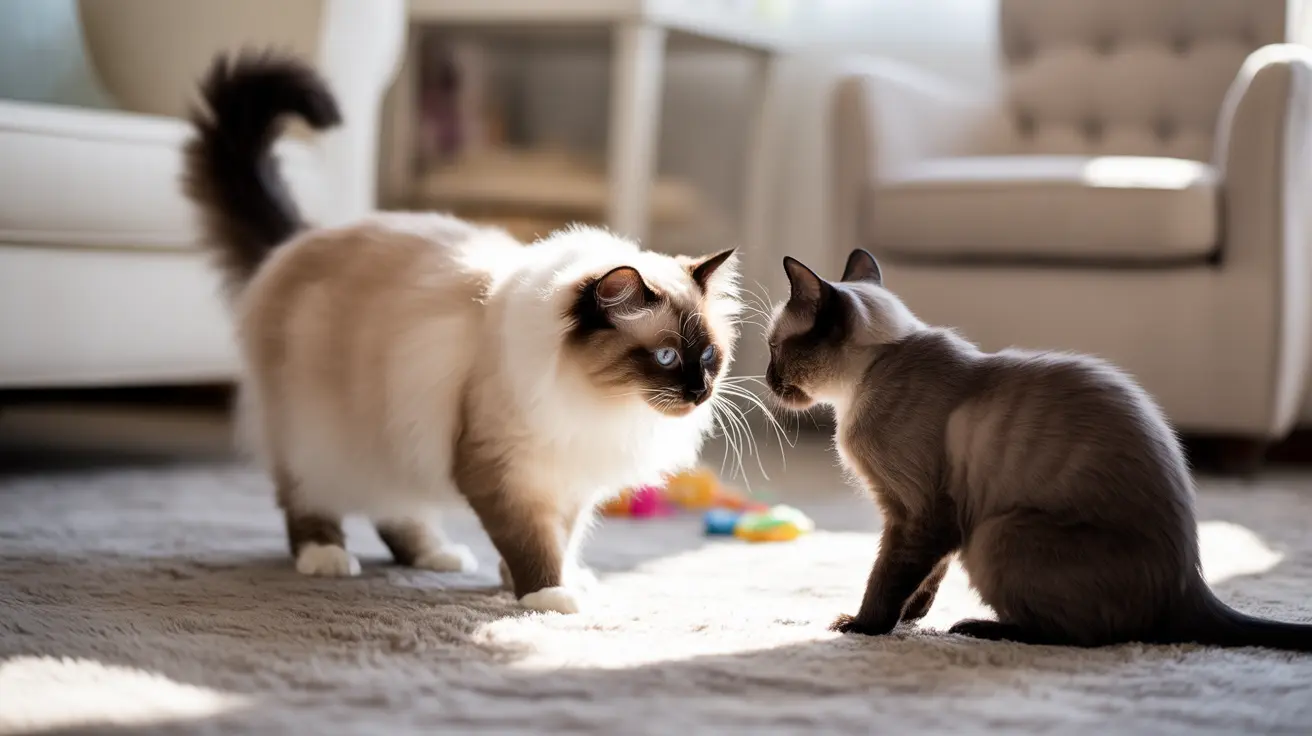Introduction
Understanding whether male and female cats get along is crucial for anyone considering a multi-cat household. While gender can influence feline relationships, the success of these partnerships depends on various factors beyond just sex differences. This comprehensive guide explores the dynamics between male and female cats and provides expert insights on creating harmonious mixed-gender cat households.
From personality matches to proper introductions, we'll examine what really determines whether your cats will become best friends or reluctant roommates, regardless of their gender.
Key Factors Affecting Male and Female Cat Relationships
Personality and Socialization
When it comes to male and female cat compatibility, individual personality traits often matter more than gender. Well-socialized cats typically adapt better to new companions, regardless of whether they're male or female. Early socialization between 2-7 weeks of age plays a crucial role in developing a cat's ability to form positive relationships with other felines.
The Critical Role of Neutering
Neutering or spaying is perhaps the most significant factor in determining whether male and female cats will get along. Unaltered cats often exhibit territorial behaviors and aggression, while fixed cats typically display more balanced temperaments. Neutered males, in particular, tend to be more accepting of other cats and less likely to engage in territorial disputes.
Understanding Gender-Specific Behaviors
Male Cat Characteristics
Male cats often exhibit more social and playful personalities, making them generally easier to introduce to other cats. They typically:
- Show more overt affection
- Engage in playful activities more readily
- Form strong bonds with both male and female cats
- Adapt more easily to new companions when neutered
Female Cat Tendencies
Female cats commonly display:
- More independent behavior
- Stronger territorial instincts
- Greater cautiousness with newcomers
- Nurturing tendencies, even after spaying
Creating Successful Mixed-Gender Cat Households
Proper Introduction Techniques
The key to successful integration of male and female cats lies in proper introduction methods:
- Start with separate living spaces
- Use scent exchange techniques
- Allow visual contact through barriers
- Gradually increase supervised interaction
- Never force direct contact
Environmental Setup
Create an environment that supports positive relationships:
- Provide multiple resources (food bowls, litter boxes, scratching posts)
- Ensure adequate vertical space
- Create separate territories
- Maintain escape routes and hiding spots
Frequently Asked Questions
Do male and female cats generally get along well in a shared household?
Yes, male and female cats can get along well in shared households, particularly when both are neutered. Success depends more on personality compatibility and proper introduction than gender alone.
How important is neutering for improving the relationship between boy and girl cats?
Neutering is crucial for harmonious relationships between male and female cats. It reduces territorial behavior, eliminates mating-related aggression, and generally leads to calmer, more sociable personalities in both genders.
What role does a cat's personality play in whether male and female cats can coexist peacefully?
Personality plays a fundamental role in cat compatibility, often more significant than gender. Cats with similar energy levels and temperaments typically coexist more peacefully, regardless of their sex.
Are there any specific introduction methods recommended to help male and female cats adjust to each other?
Yes, gradual introduction methods are essential. Start with separate spaces, perform scent swapping, allow visual contact through barriers, and slowly progress to supervised direct interaction over several weeks.
Which cat gender pairings tend to have fewer conflicts: male-male, male-female, or female-female?
Male-male and male-female pairings typically have fewer conflicts than female-female combinations. Neutered male pairs often show particularly good compatibility, while female pairs may be more prone to territorial disputes.
Conclusion
While gender can influence feline relationships, the success of male and female cats living together depends primarily on proper neutering, personality matching, and careful introduction processes. By understanding these factors and following expert guidelines for integration, you can create a harmonious multi-cat household regardless of your cats' genders.






